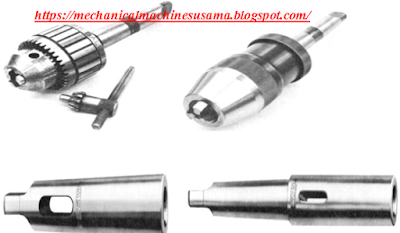Operations Performs on Lathe Machine
Facing
Facing is the
process of removing metal from the end of a workpiece to produce a flat
surface. Most often, the workpiece is cylindrical, but by using 4- jaw chuck we
can face rectangular or odd-shaped work to form cubes and other non-cylindrical
shapes.
When a lathe
cutting tool removes metal it applies considerable tangential (i.e. lateral or
sideways) force to the workpiece. To safely perform a facing operation the end
of the workpiece must be positioned close to the jaws of the chuck. The
workpiece should not extend more than 2-3 times its diameter from the chuck
jaws unless a steady rest is used to support the free end.
Straight turning
In this
operation the work is held in the spindle and is rotated whole the tool is fed
past the work piece in a direction parallel to the axis of rotation. The
surface generated is a cylindrical surface.
Taper
Turning
A taper may be
defined as a uniform increase or decrease in diameter of a work piece measured
along its length. In a Lathe taper turning is an operation to produce a conical
surface by gradual reduction in diameter from a cylindrical job.
Contour turning
Instead of feeding the tool along a straight line
parallel to the axis of rotatation as in turning, the tool follows a contour
that is other than straight, thus creating a tapered cylinder or conical shape.
Form turning
In this operation, sometimes called forming, the
tool has a shape that is imparted to the work by plunging the tool radially
into the work.
Chamfering
The cutting edge of the tool is used
to cut an angle on the corner of the cylinder, forming what is called a
"chamfer."
Cutoff
The tool is fed radially into the rotating work at
some location along its length to cut off the end of the part. This operation
is sometimes referred to as parting.
Threading
A pointed tool is fed linearly across the outside
surface of the rotating workpart in a direction parallel to the axis of
rotation at a large effective feed rate, thus creating threads in the cylinder.
Boring
A single-point tool is fed linearly, parallel to the
axis of rotation, on the inside diameter of an existing hole in the part.
Drilling
Drilling can be performed on a lathe by feeding the
drill into the rotating work along its axis. Reaming can be performed in a
similar way.
Knurling
This is not a machining operation because it does
not involve cutting of material. Instead, it is a metal forming operation used
to produce a regular cross hatched pattern in the work surface.




Comments
Post a Comment